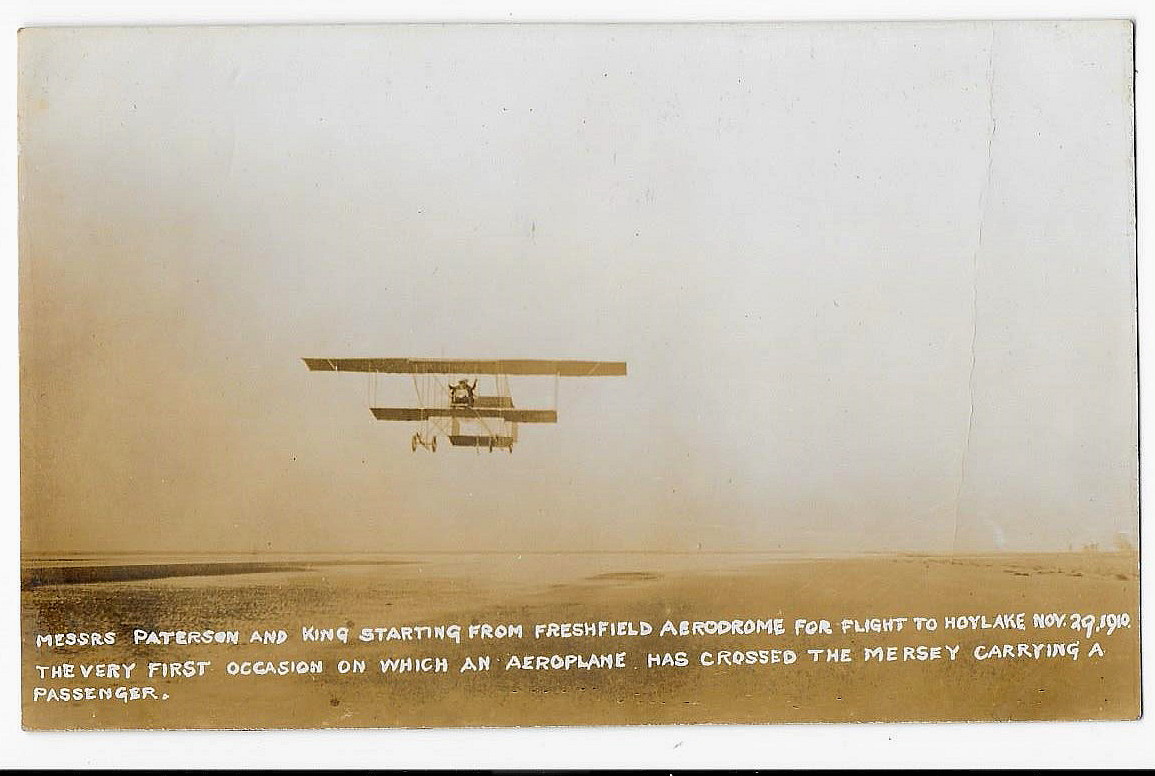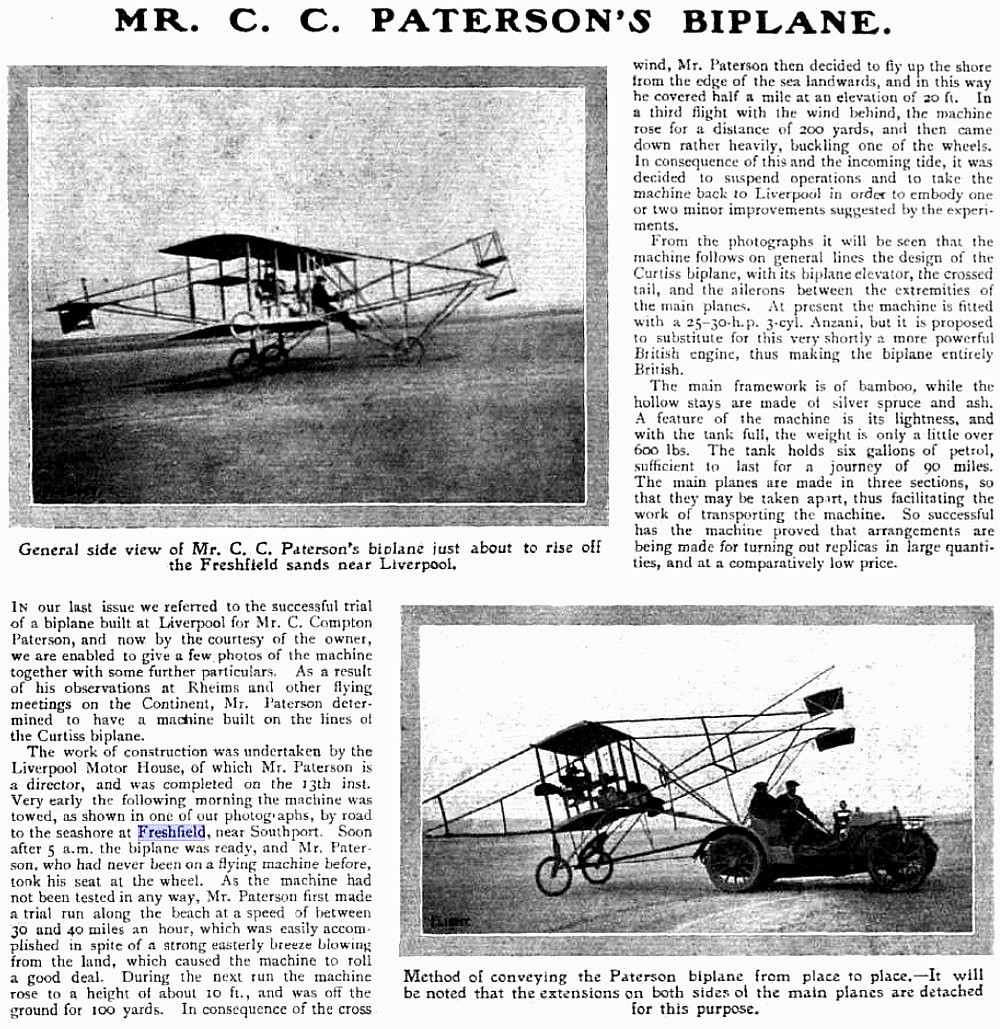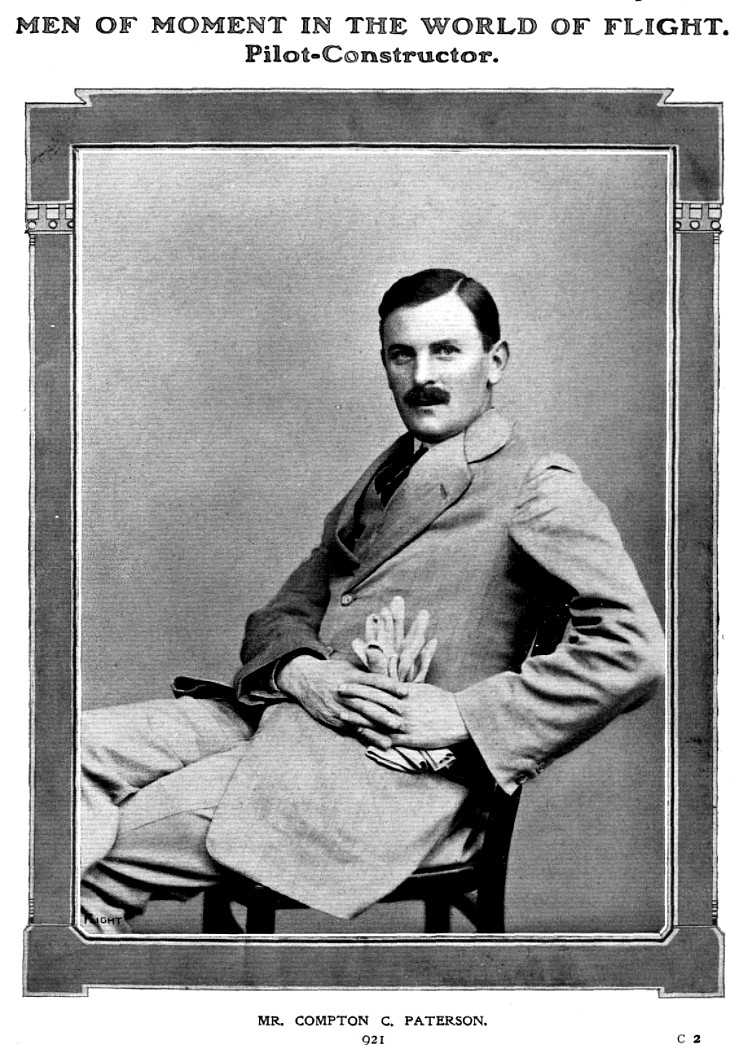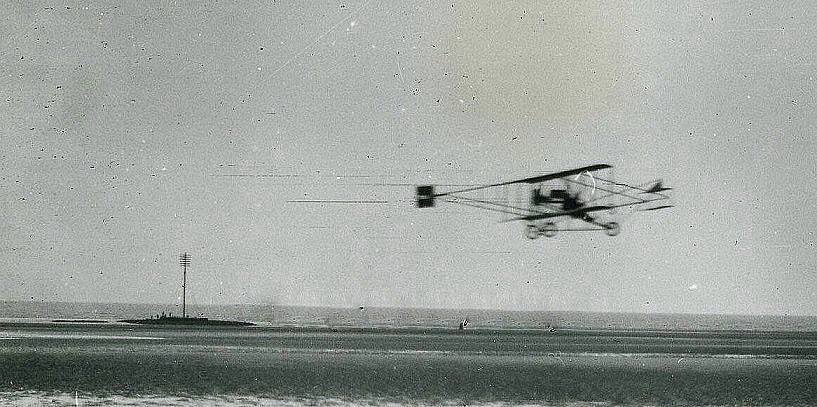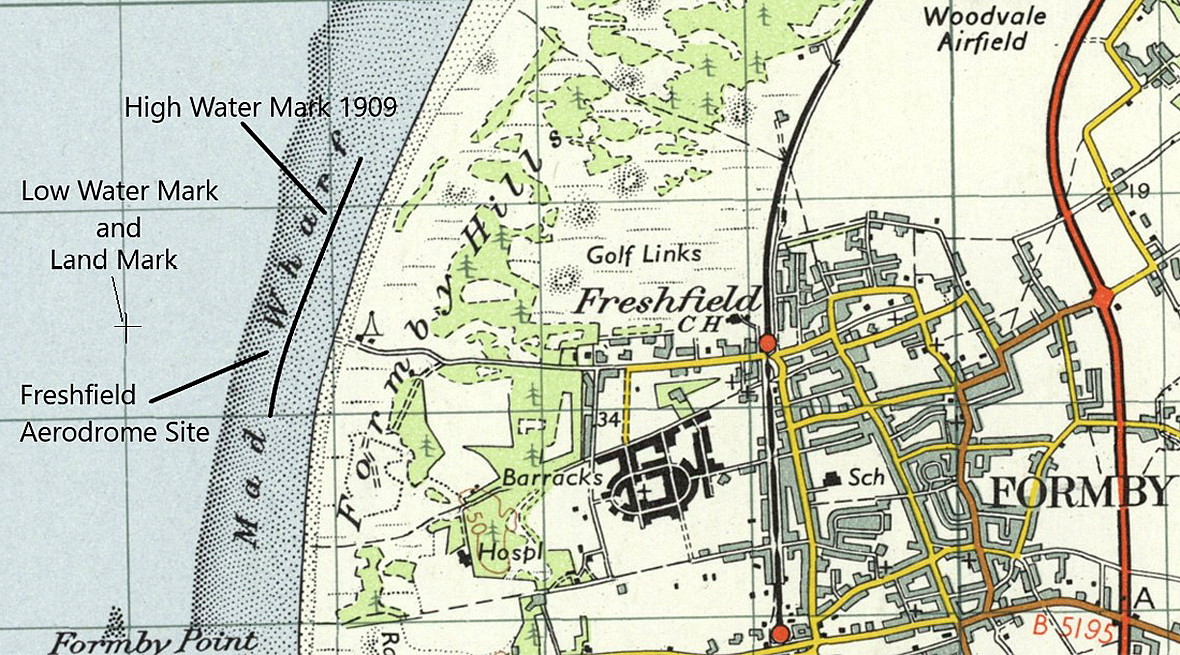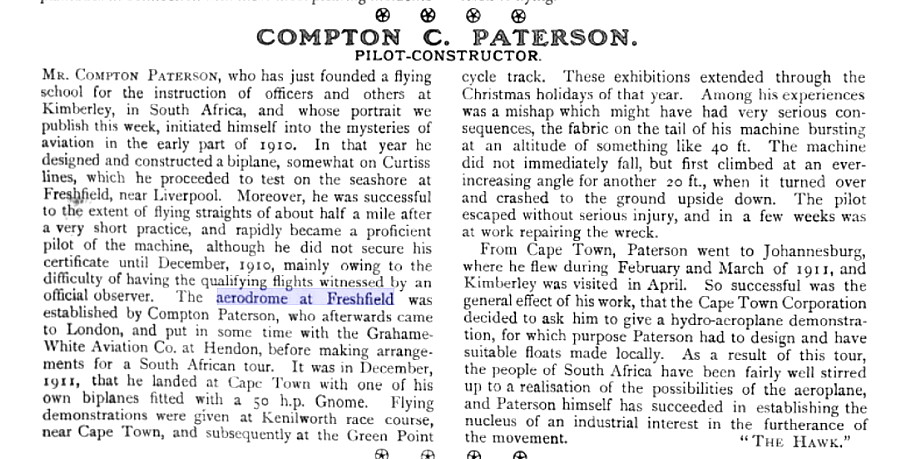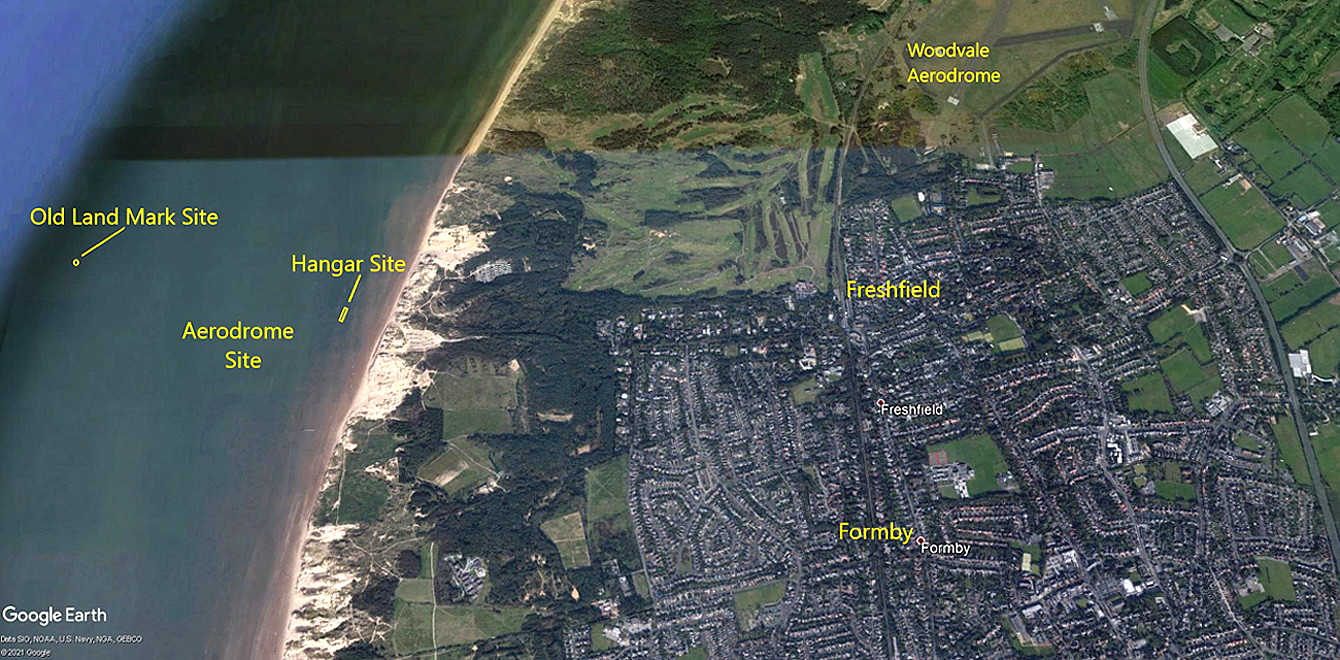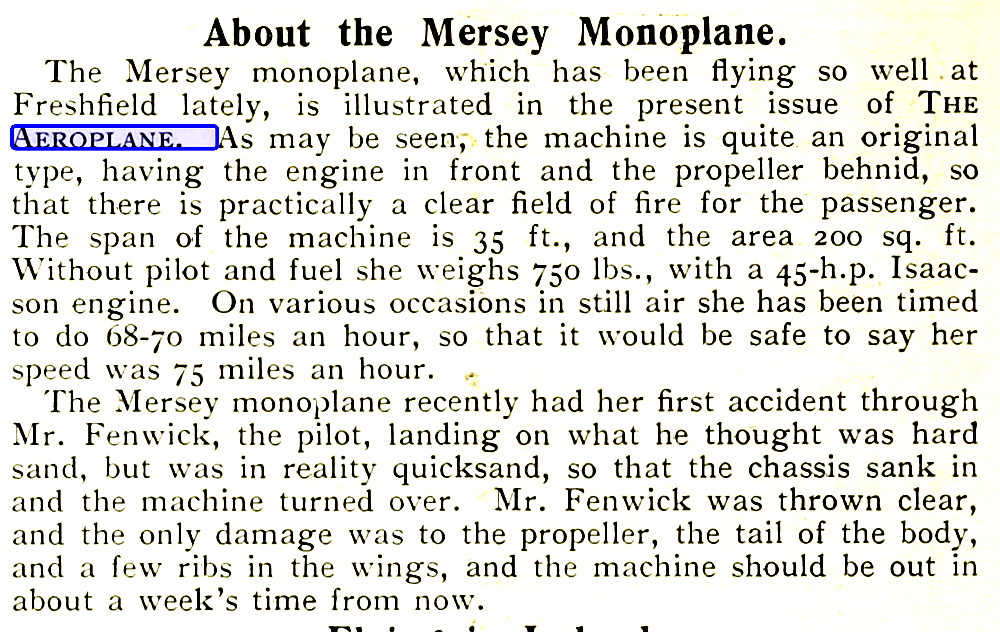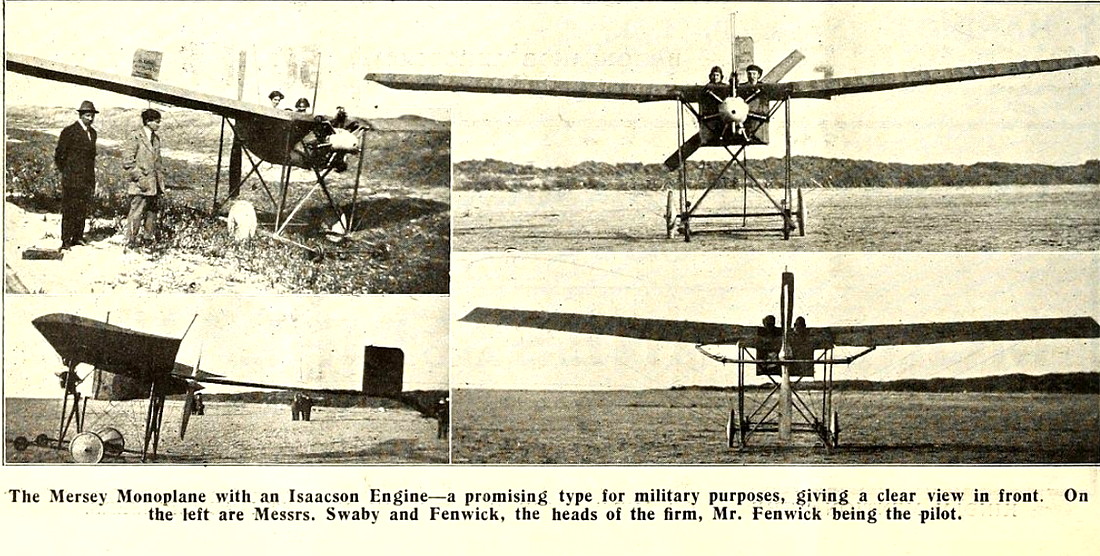Freshfield Sands
Note: This map only gives a rough position of the actual site used within the UK.
FRESHFIELD SANDS: Early flying ground or airfield (also known simply as FRESHFIELD)
Note: This great picture, from a postcard, was kindly offered by Mike Charlton who has an amazing collection. See www.aviationpostcard.co.uk
The caption pretty much says it all.
Users: Liverpool School of Aviation from 1909 (?) to March 1911
Manufacturing: Compton Paterson, Mersey Aeroplane Co and Planes Ltd
Location: On the beach, (hangars in the dunes), roughly 1nm WNW of Formby town centre
Period of operation: 1909 to 1913 only?
A MICHAEL T HOLDER GALLERY
Note: The second item was published in Flight magazine on the 28th May 1910, as was the portrait.
Note: Fifth item: These three aerial photos taken by Mr Amos, being flown by C C Paterson, were published in Flight magazine on the 6th May 1911. The seventh item is an article published in Flight magazine on the 23rd August 1913. Which serves to remind us just how highly South Africa was regarded in the U.K. until well after WW2.
NOTES: It would seem that this location was already established as a well known ‘aerodrome’ in 1909 and in the autumn that year considered as a base by Samuel F Cody for his attempt at the first flight between Liverpool and Manchester before deciding on AINTREE.
According to Ron Smith in his book British Built Aircraft Vol.5 “Birkenhead Planes Ltd was formed by W P Thompson who instructed Handley Page at Barking to build a large biplane with two pusher propellers.” It apparently flew successfully from September to December. I suppose what we need to appreciate today is that in those days, an aeroplane that survived being operational for four months was quite an achievement.
MR G HIGGINBOTHAM
The first Compton Paterson biplane was first flown here on the 14th May 1910 and was considered to be a successful type. In early 1910 a Mr G Higginbotham is listed as operating a Blériot monoplane from FRESHFIELD. However, it appears Mr Higginbotham later used the Comptom Paterson, a pusher with a tricycle undercarriage for a mail service between FRESHFIELD and SOUTHPORT during October 1911. Mr Higginbotham gained his Royal Aero Club certificate No.96 , (flying license), in July 1911. So, from student to ‘commercial’ pilot in just four months. Those were the days!
But, as noted elsewhere there was in those days quite a lag between passing the test to be a pilot and having the actual license issued. In between times it does appear you could continue to fly while awaiting the arrival of the license? But probably not instruct?
CONFUSING HISTORY?
Typically, the history gets a tad confused. According to Ron Smith in 1910 FRESHFIELD had five hangars, the locally based ‘machines’ belonging to Mr Paterson. These included a Curtiss biplane, two Blériots, a Henry Farman and the ‘Handley Page’ of Planes Ltd flown by Mr Fenwick.
According to official records Mr R C Fenwick flying a Planes Biplane, (presumably the type ordered by W P Thomson and built by Handley Page as the H.P.2B at BARKING in ESSEX?), gained his Pilot Certificate No: 35 here dated 29/11/10. Rather oddly perhaps the next official record I could find was for another pilot gaining his Pilot Certificate here was in May 1913, which does to seem to indicate fairly limited flying activity taking place after 1911? But, according to Ron Smith the FRESHFIELD ‘aerodrome’ site was being advertised in August 1911 as being, “…flying rights over several miles of hard smooth beach, very broad (probably the best flying ground in England)”… and it had hangars available to rent.
Having just been awarded his Pilot Certificate at the end of November 1910, just a year later R C Fenwick was, “test flying the Planes Ltd monoplane which had then flown a distance of 100 miles without defect.” Entered for the Military Trials on SALISBURY PLAIN in 1912 it crashed, (in the quaint terms used in those days), fatally injuring him.
TWO FLYING SITES
Many years ago it struck me as interesting that another pilot of that period listed WATERLOO as the place he gained his pilots certificate and that is just south of Crosby about 6nm SSE of FRESHFIELD. I would have expected to find only one flying ground in this vicinity in those very early aviation years and to find two so close together was quite a surprise.
The explanation came about a year later when I penned the question to Nick Forder, (Curator Air and Space) of the Museum of Science and Industry in Manchester via Airfield Review. Mr Forder told me WATERLOO SANDS near Bootle was founded by Henry G Melly in March 1911 after he moved his Liverpool School of Aviation, (or Liverpool Aviation School according to others) away from FRESHFIELDS. This is the same Mr Melly who took part in the first successful Liverpool to Manchester flight in July 1911 (AINTREE to TRAFFORD PARK).
AND MORE
In May 2022 Mike Holder discovered this article with pictures published in The Aeroplane on the 13th June 1912. I am no expert of course, but for that time, this design was surely unique (?) and, in its way, a very advanced concept.
We'd love to hear from you, so please scroll down to leave a comment!
Leave a comment ...
Copyright (c) UK Airfield Guide















